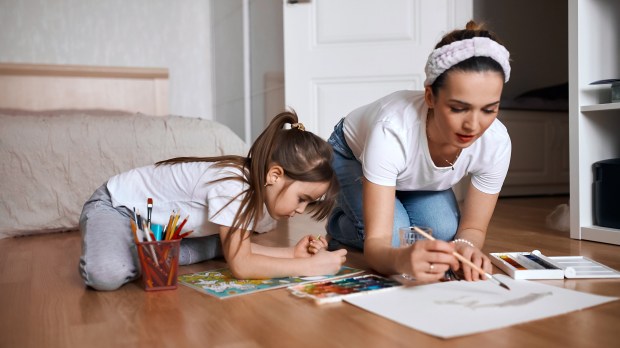Lenten Campaign 2025
This content is free of charge, as are all our articles.
Support us with a donation that is tax-deductible and enable us to continue to reach millions of readers.
The first apartment I ever had, which I rented at the tender age of 20 with my newlywed wife, was masterfully decorated with a free hand-me-down couch so faded and out of style that it had ironically become cool again, a chair literally rescued from the garbage, and some particleboard bookshelves we found by the college dorms the day all the students moved out.
We had one old television that I found by the dumpster. It barely worked but at least could pick up the baseball game on the antennae. Occasionally I would recline on our bed, which was just a mattress sitting directly on the floor, and watch a game through the static on the screen.
We never had enough bookshelves so our coffee table, which was really just an old trunk, was chaotically piled high with books. Books were the one thing we had in abundance. Everything else was re-purposed, used, and (ideally) free.
I remember that apartment fondly — all the good times we had there, the creativity it took to make it look half-way presentable, the sheer joy of building a life together. The walls were decorated with my own paintings and black-and-white photographs from my college art classes. Our closet was stocked with carefully curated clothing from the thrift store, never new but often trendy in a hipster sort of way, acquired over many years of patient searching. I don’t think it would have felt the same if we had enough money to go out and buy whatever we wanted. It would have been nicer and easier, for sure, but it would have felt ready-made and unearned. Those early days of marriage were an adventure that I wouldn’t trade for the world.
Fast forward 20 years, and our family has expanded to include six children. We dress a little better now, our house is slightly more tasteful, the furniture is a little nicer, but I would still consider our family to be thrifty. With six children, we have to watch our expenses.
Each year in December, we pull out the box of Christmas tree ornaments to decorate the tree. As we look at them one by one, the ornaments we love by far the most are the cheap, handmade ones. Some are 30 years old and falling apart, but they’re beautiful to us because they exude memories. Those old ornaments my wife and I made when we were children are now joined by the handicraft of our own children. The tree is an explosion of kitsch – reindeer made out of clothes pins and pipe cleaners, pictures of children in frames of popsicle sticks, and little handprints in plaster casts. It’s a decorating scheme that costs almost no money at all, but it bursts with creativity and joy.
There are certainly times I wish we had more money. It would be great to drive a new car instead of one that’s 15 years old. A vacation to an all-inclusive resort once a year would really do wonders for my tan. It would be lovely to have a new dining room table that doesn’t have a thousand dings from toddlers smashing it with a spoon over the years. But truth be told I can’t complain. We have what we need. No one is going hungry. All the kids have clothes that more or less fit.
There’s a hidden benefit to not having a lot of material excess. Our children, like we were as newlyweds, are immensely creative. We’re highly selective about what toys we buy them. None of them have fancy electronics to soak up their attention. We don’t have enough extra in our budget to over-schedule them in pricey activities. They have to figure out how to amuse themselves. Our house is bursting with art projects that decorate the walls, including a large mural currently in progress. The kids make their own dolls, carve sticks into toys, and sew all sorts of things. They’ve handmade pillows, spent time hammering bike ramps together, and erected tree forts. They make their own paper and bind together hand-made books. They die their own yarn.
G.K. Chesterton, praising the romance of thriftiness, said, “If a man could undertake to make use of all things in his dustbin he would be a broader genius than Shakespeare.” I truly believe that there is genius in my children that is brought out by thrift. They’re forced to be creative and what they come up with is truly astonishing. This is why Chesterton says, “thrift is poetic because it is creative.”
I suppose, in the end, it isn’t about how much you buy or don’t buy, what you can afford or can’t afford, and it certainly isn’t about romanticizing the lack of money or shaming the wealthy. It seems to me that thrift is valuable in itself. It encompasses the refusal to waste, thoughtfulness about what objects we surround ourselves with, creativity, and putting just a little bit more love into what we do have so that our lives sparkle with joy and happy memories. In a society so taken with wasteful consumption, the true romance is in thriftiness.


